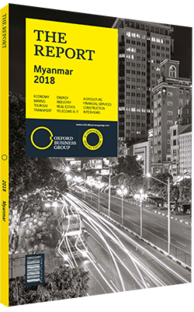Daw Marlar Win, Chairperson, UMG Myanmar: Interview

Interview: Daw Marlar Win
How can the government address the trade deficit?
DAW MARLAR WIN: Since the beginning of Myanmar’s democratic transition and political overture, the economy has changed a lot. Several trade barriers were removed, which led to a large influx of foreign investment and new consumer products. Given the low stage of development of the local industrial sector, the opening of international markets caused a sharp increase in imports. These factors help explain the country’s growing trade deficit. Unfortunately, this trade imbalance has increased the volatility of the kyat and put pressure on the government’s fiscal revenue.
With this in mind, one could argue the government opened the economy too quickly. In my opinion, that transition should have been more gradual, because Myanmar did not possess the industrial base to compete with other regional countries’ export sectors. In order to address the trade deficit, as well as promote integral and inclusive growth, the government should present clear economic plans and concrete policies that define the path the economy should take.
Once the government creates a concrete strategy that allocates resources in sectors that can drive growth, economic development will boost the real economy as well as the average citizen’s income.
Which sectors should the government prioritise?
MARLAR WIN: Looking at the current economic landscape, the key priorities should be the development of agriculture, the food industry, tourism and education.
The food retail business is one of the most promising market segments, because it is intimately related to the current market structure of Myanmar. One of the defining characteristics of advanced economies is a large middle class. Regardless of how you define it, the middle class drives internal consumption demand. The purchasing power of a particular society naturally affects its consumption patterns. There is no better example than China, which, since the 1980s, has witnessed the emergence of a stronger and more prosperous middle class with growing purchasing power. At present, Myanmar’s consumption patterns resemble China’s consumption patterns 30 years ago.
Myanmar’s income distribution looks like a pyramid, with a very large base of low-income individuals, meaning that the middle class is still very small, and businesses cannot easily sustain growth for long periods. The construction sector is a good example of that: it experienced an initial boom when the economy opened up, but it has been contracting since 2015.
The average citizen has a very low level of purchasing power, and consumption is still focused on basic products. These factors make the food industry and agriculture key markets with promising growth perspectives.
What is a good strategy for economic productivity?
MARLAR WIN: Education is the basic foundation for enhanced productivity. Education has been neglected over the last 20 years, and that is likely one of the root causes of Myanmar’s underdevelopment. It is crucial that we invest in education and develop a policy framework to improve the quality of local schools, universities and vocational training institutions.
In addition to improving education, the government should work to unlock the potential of the agriculture sector. Compared to other countries in the region, agriculture in Myanmar is one of the least productive. To change that, the government should improve the quality of seeds available in the market, fund or subsidise the construction of new irrigation systems, allow farmers easier access to financing schemes, revise the land law and invest in the training of farmers through better education. Lastly, Myanmar needs to upgrade its infrastructure and connectivity. To enhance productivity you need to strengthen your base and invest in human capital. Currently, we do not have the capacity to compete against countries like China, which have extremely productive and robust manufacturing sectors.
You have reached the limit of premium articles you can view for free.
Choose from the options below to purchase print or digital editions of our Reports. You can also purchase a website subscription giving you unlimited access to all of our Reports online for 12 months.
If you have already purchased this Report or have a website subscription, please login to continue.

